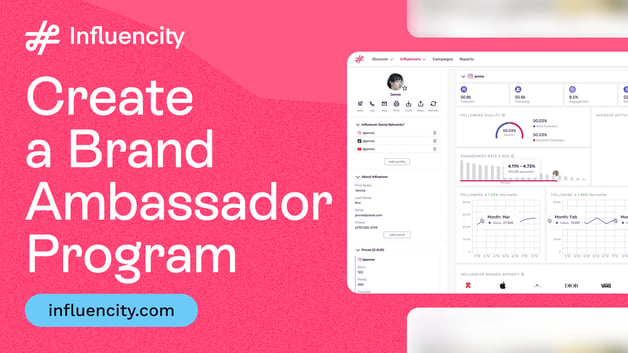Measuring the Impact of Micro-Influencer Collaborations on E-commerce Sales
A micro-influencer collaboration can be a great way to target new audiences and attract customers to your brand. However, because this type of collaboration tends to focus more on long-term results, it can sometimes be difficult to determine the best way to measure performance.
This article will explain how to measure the impact of micro-influencer collaborations on your e-commerce sales and marketing ROI.
Tips to Help You Measure the Impact of Micro-Influencer Collaborations on Your E-commerce Sales
In terms of audience size, there are 4 types of influencers that you can collaborate with as a brand or agency: nano-, micro-, macro-, and mega-influencers.
A micro-influencer falls somewhere in the middle with between 10,000 and 100,000 followers.
These types of influencers can be very effective at targeting and engaging niche segments of the market, which can be especially useful in the e-commerce industry. A micro-influencer collaboration is simply the term used to describe the partnership you form when you work with an influencer of this size.
Whether you’re targeting B2B or B2C buyers, when you launch an influencer marketing campaign, it’s important to measure the impact of your micro-influencer collaborations on your e-commerce sales. That way, you will know whether they are meeting performance expectations and generating the e-commerce sales you need to get a substantial ROI.
Here are a few tips to help you with this.
Set Clear Goals
As soon as you’ve reached out to an influencer, it’s important to set clear and consistent goals for your campaign and communicate them to your selected micro-influencer. You also need to define which performance metrics you will be tracking to measure your progress towards these goals. This will make it much easier to measure the impact of your micro-influencer collaboration once you have launched your campaign.
These goals might be:
- Raising brand awareness.
- Boosting engagement.
- Driving more traffic to your website.
- Improving the customer experience.
- Increasing your e-commerce sales and conversions.
- Increasing the lifetime value of your customer (LTV).
You can then work with your micro-influencer on effective influencer collaboration ideas that will help you reach these goals and get your e-commerce store where it needs to be. Then once your campaign has gone live, you can track your defined metrics to see how they compare with your objectives and if your micro-influencer is meeting expectations.
Use Affiliate Tracking Links and Promo Codes
Another great way to measure the impact of a micro-influencer collaboration is by using affiliate marketing tracking links and promo codes. This method is especially useful if you are collaborating with multiple micro-influencers as you can trace back any direct sales to individual influencers to see who is generating the highest ROI.
With an affiliate marketing tracking link, you provide each micro-influencer with a link for them to use in their posts. Each micro-influencer has their own unique link. You can then use sites like Google Analytics to trace back the traffic from your e-commerce site to see how many sales can be directly attributed to each of your collaborating influencers.
Promo codes work in a similar way. Each micro-influencer is given a unique promo code to share in their posts. Customers then use the code to obtain a discount when they make a purchase on your e-commerce site. You can then calculate how many sales have been made using each code to calculate the direct ROI of each collaborating influencer.
Measure and Compare Performance Results
The third and final way to measure the impact of your micro-influencer collaborations is to measure and compare performance results.
The easiest way to do this is by using influencer tracking tools. You can use these tools to measure the performance of each influencer’s campaign to see if they have met your reach and engagement objectives.
In terms of ROI, the best way to compare the performance of each micro-influencer is through data analytics.
For example, with Influencity’s reporting tools, you can generate a range of reports to compare your performance campaign to campaign, season to season, and year to year. This makes it much easier to calculate your ROI on an ongoing basis.
Most importantly, you can measure and compare performance metrics at four important levels:
- Campaign level: the overall performance of your micro-influencer campaigns
- Social-media level: the impact your campaigns are having on social media in terms of online presence, reach, and engagement.
- Influencer level: the performance of each micro-influencer collaboration.
- Post level: the performance of each individual post.
With this data, you can then calculate how much ROI each micro-influencer collaboration is generating in line with your campaign objectives and expectations. You can also compare reports to determine who is making the biggest impact on your e-commerce sales.
Tags:






















%20and%20How%20Can%20They%20Benefit%20Your%20Brand%20article.jpg?length=628&name=What%20Are%20Key%20Opinion%20Leaders%20(KOL)%20and%20How%20Can%20They%20Benefit%20Your%20Brand%20article.jpg)








